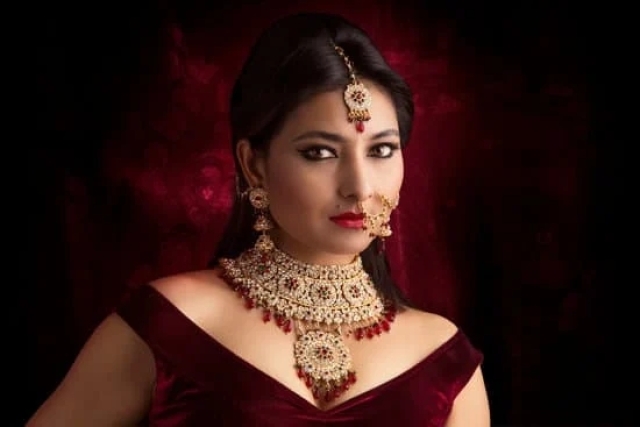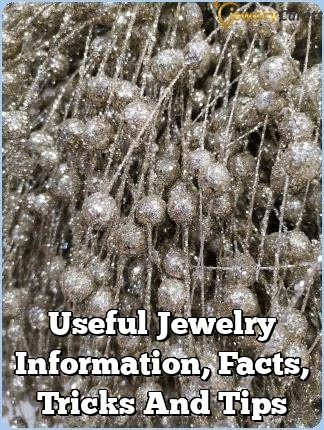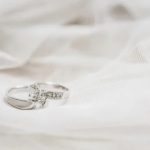Gold jewelry has been a popular choice amongst people, both as an investment and fashion accessory for centuries, with this glamorous metal representing greatness, opulence and timelessness. Its timeless appeal transcends throughout age, trends and culture around the globe like no other metal can. Below are a few interesting facts about gold jewelry that will help to further expand our knowledge of the precious material:
1) Gold Comes in Different Colors: Gold does not just come in one color, but instead it contains different alloys and carat content which give way to variations in shades; ranging from yellow gold to white gold and even rose gold. For instance 14K Gold is made up of 58% pure Gold mixed with alloys such as copper or zinc leading towards its reddish hue.
14K also contains 58% pure gold allowing it to be called ‘Gold’ in comparison to lower carats such as 10K; which is rated at only 41.7% pure content.
2) Antique Jewelry Contains 22k Gold Content: In the past jewelers used high carat content when creating their pieces because they needed higher amounts of metal for intricate detailing; leading toward mostly rings containing 22K during this period. It was believed by many customers that by having higher carats of gold inside their pieces imparts even greater value than lesser amounts due to the importance given towards purity – which still holds true today.
3) Low priced Jewelry Might Not be Made Entirely From Gold: Much of the low priced jewelry you find on the market today may not be entirely made from solid gold despite its appearance and claims. Many people use low cost base metals such as brass or copper then plate them with a thin layer of molten gold – giving a ‘cost effective’ look-alike product at a fractional cost.
Therefore buyers should do some research prior making any purchases so they are fully informed before investing.
Gold jewelry has been around since ancient times, originally crafted by artisans and now mass produced through modern manufacturing techniques – making it an ideal choice for buyers looking to invest in something precious yet practical at an affordable price point. By understanding these important facts related to gold jewelry, we can make well informed decisions, based on not only aesthetics but values attached too.
The History and Symbolism of Gold Jewelry
Gold jewelry has been a symbol of wealth and status since ancient times. The earliest pieces were discovered in royal tombs in Egypt dating back to 3000 BC. Ancient Egyptians believed gold was the physical manifestation of the sun god Ra, making it an especially holy item. They often buried pharaohs and other nobility wearing gold jewelry so they could take their prized possessions with them into the afterlife.
The skilled goldsmiths of these early civilizations produced remarkable pieces using simple tools and techniques like hammering, soldering, and engraving. Even with these limited tools, they were able to craft intricate pieces with detailed images or motifs, often representing gods or symbols of power which further enhanced their religious significance.
Gold’s Medicinal Properties
In addition to its aesthetic value, gold had medicinal properties in many cultures around the world for hundreds (if not thousands) of years. In Ancient Egypt, for example, crushed gold was made into pills as medicine that were thought to cure a variety of illnesses including skin diseases and open wounds.
Byzantine physicians prescribed small quantities of liquefied gold as a treatment for various psychological disturbances such as depression and schizophrenia, while Ayurvedic practitioners from India used it as an anti-inflammatory agent.
Modern Uses
Today, while the medicinal use of gold has diminished significantly – it is still occasionally prescribed by doctors in trace amounts for certain medical conditions such as rheumatoid arthritis – it remains a popular material for fine jewelry because of its color and malleability. In fact, according to the World Gold Council 2018 report on global demand trends for precious Metals demand for gold jewellery rose 5% year-on-year worldwide between 2017 and 2018.
Gold is also increasingly versatile due to advances in technology; as 3D printing gives designers greater flexibility when creating new custom designs compared to traditional methods like sand casting or wax carving. Furthermore this process is much less expensive than those older methods, allowing jewelers to produce superior quality merchandise at lower prices.
This opens up a market opportunity for smaller independent shops who can now compete against larger chains through offering unique custom-made pieces at competitive rates without sacrificing quality or design aesthetics.
Different Gold Alloys and Karats
Gold is too soft in its pure form for everyday use. For that reason, most gold jewelry in North America is an alloy of gold with other metals such as copper, silver, and zinc to give it strength as well as to enhance its color and adjust its cost. The purity of the gold is measured in Karat (kt) or parts per thousand — 24 karat is pure gold and the highest you’ll find in gold jewelry.
In general, the higher the percentage of gold used, the more expensive the item will be to purchase. Here are some facts about different gold alloys and different karats:
- 24K – 24 karat (or “fine”) gold = 100% pure metal content
- 22K – 22 karat (or “near fine”) gold = 91.7% pure metal content
- 18K – 18 karat (or “standard”) gold = 75% pure metal content
- 14K – 14 karat (or “medium-high”)gold = 58.3% pure metal content
- 10K – 10 karat (or low/least amount of pure metal content)
Higher karats denote greater purity, which means these pieces are softer than lower-karat settings and more prone to scratches or dings from wear over time; that said, they radiate a stunning signature deep yellow glow. Pieces made with higher karats also tend to be priced higher due to their increased ratio of precious metals and rarity compared to lower-karat pieces such as 10k or 14k.
It’s important to consider how often your jewelry will be worn when deciding on what type to get-high-karat fine jewelry may come at a high price point but can last you a lifetime if taken care of properly.
Gold alloys add strength and durability while offering shades from warm white to classic yellow, rose pink tones, and even green hues known as green gold or Russian Gold. Different colored alloy metals — like copper for pinkish alloys or nickel for white — create different effects depending on how much is used and what other elements are added into the mix.
Since each shade casts a unique hue on any given piece it is important when selecting a particular type of unpolished chain or stone setting that allows you to compare between different colors before making the final choice so it complements perfectly whatever collection you own already.
Advantages of Wearing Gold Jewelry
Gold jewelry has been a popular choice for hundreds of years and comes with many advantages. The following outlines a few of the benefits associated with wearing gold jewelry:
- Longevity: Gold is an extremely long lasting material and so, when crafted into jewelry it can endure through many generations.
- Style: Gold jewelry is timeless. Meaning it never goes out of style and so your purchase should stand the test of time.
- Maintenance: Gold is corrosion resistant and needs minimal maintenance compared to other metal materials such as silver.
Investing in Gold Jewelry
Not only is gold beautiful but it can even be used as an investment. Look out for pieces labelled “fine gold” which are made up from entirely of pure 24 karat gold or “hardly gold alloys” made form 14 – 18 karat gold; these will give you the best financial return on your investment. As part of a diversified portfolio buying some quality fine gold jewelry might even be a wise decision for any savvy investor.
Different Styles available
Gold has always been seen as something exquisite – from ancient times to today it manages to lend glamor, luxury and prestige to everything it’s associated with. Whether you prefer more intricate designs or plain traditional styles, you can find a variety of different types of jewelry available including:
- Rings: Rings are one of the simplest forms of wearing your love for Gold and come in almost infinite shapes and sizes – right from classic bands to gem-studded marvels.
- Necklaces : Necklaces have been traditionally used in India since long ago. Typically they come in 24 karat Gold with a modern twist nowadays often having embedded gemstones.
- Earrings : Earrings are one accessory that will never go out style. From hoops to studs earrings add luster and charm without doing much.
- Bangles : These wrist accessories bring a sense of royalty into any attire, making them ideal for special occasions like weddings or parties.
Fashionable Designs of Gold Jewelry for Every Occasion
Gold jewelry is a staple of any fashionista’s wardrobe. From yellow gold pendants and diamond studded earrings, to white gold rings with intricate filigree designs, there are countless designs to choose from that make it easy to find something that complements a variety of looks.
Gold jewelry adds an elegant touch for special occasions such as weddings, anniversaries, birthdays, graduations, or other formal affairs. With new bold designs coming out each season, it’s impossible not to find something flashy and fashionable that will complete your outfit.
Long-Lasting Durability
In addition to being incredibly fashionable pieces of jewelry in their own right, gold jewelry is also renowned for its long-lasting durability. Because it does not corrode nor tarnish like other metals do when exposed to the elements or chemicals (such as chlorine and detergents), gold is the perfect metal for crafting long-lasting fine jewelry pieces such as rings.
Furthermore, the color of gold does not fade over time like some other metals might; instead it retains its luster appearance no matter how old the piece may be. This makes buying gold a true investment piece – one that can be passed down through generations with little degradation in value or quality.
Health Benefits
Gold is believed to have healing powers and some individuals wear certain pieces solely for health benefits rather than for aesthetic reasons. Allegedly wearing gold can help alleviate joint pain while also improving circulation – an excellent benefit after a long day at work.
Additionally it has been thought that wearing gold encourages positive energy which could lead to increased optimism in life by allowing the wearer a more positive outlook on new opportunities and experiences that life brings their way. Finally, many traditional cultures believe wearing golden necklaces will act as a protection against negative forces and bad omens – its protective properties can bring peace of mind and spiritual balance to anyone who wears it close to them.
Tips for Protecting and Cleaning Gold Jewelry
In order to keep your gold jewelry looking its best and lasting years to come, it is important to follow a few tips for optimal care. One of the most important steps in preserving gold jewelry is proper storage, as this helps prevent it from getting scratched or tarnished.
For earrings, necklace pendants and rings, storing them separately in a soft cloth pouch or items that are individually wrapped can help protect them from scratches and tangles. It is also helpful to try not to expose gold jewelry to extreme temperatures or direct sunlight as this can cause discoloration.
Cleaning Gold jewelry
When it comes time to clean gold jewelry, there are a couple of simple methods that can be used. First, you can make a cleaning solution with warm water and gentle detergent – such as mild shampoo – then soak the jewelry for 10 minutes before gently scrubbing with a soft brush.
You can also use ammonia-based solutions such as window cleaner or toothpaste but be sure to avoid any product that contains chlorine because this can damage the finish of your gold pieces.
After rinsing with warm water and letting them air dry, you’ll want to polish your pieces carefully using something like a chamois polishing cloth. These simple steps will restore some shine without any extra effort.
Professional Cleaning
It may be necessary every once in awhile for routine professional cleaning at least every several months or more often if being worn daily due to body oils causing the accumulation of dirt on the surface which reduces shine over time.
In addition, regular maintenance and proper cleaning will ensure that gems (like diamonds) do not become loose over time since excessive dirty buildup around settings of precious stones causes them to weaken and fall out if not routinely cleaned by experts on a consistent basis as part of an ultimate manner plan for long term enjoyment out of those fine pieces.
Exploring Gold Jewelry Markings
Gold jewelry is not only a luxurious and stylish item, but it also has an extensive history and culture of its own. Gold is often inscribed or stamped with various markings that come from all over the world and have a wide variety of different meanings. For many years, these markings have been used by goldsmiths to represent quality control and ownership.
Hallmarks
One type of marking on gold jewelry are hallmarks, which typically involve symbols or letters along with numbers representing their origin or certification. These marks can also certified gold content in terms of karats – representing the amount of actual gold in the piece – as well as other location-specific symbols.
Depending on the country producing the piece, these hallmarks could signify what process was used to create it and whether or not it meets certain standards for quality and purity. In the United States for example, you may find 14K or 18K stamps denoting either 58.5% pure (14 karats) or 75% pure (18 karats) gold content in that particular piece.
Other Comparative Markers
In addition to certifying where a piece is from or how much pure gold is present in it, hallmarks can also be used to identify who made a particular article of jewellery. Depending on where you are located marks such as “925” indicate sterling silver or “750” for 18k gold contribute further value and information about individual pieces.
This extra layer of information helps consumers better understand provenance and authenticity around certain items they might be considering buying. It also tells that customer that each piece have gone through authentication processes, meaning they can confidently buy products without fear of buying unverified items.
The Value Of Inscribed Jewellery
Beyond understanding purity levels within different types of metal, inscriptions into certain pieces add character and personal relevance for some people. Names, dates, phrases even fingerprints can be inscribed onto pieces creating fond familial memories connected to them forever.
These markers demonstrate sentimental connections between loved ones allowing customers access to incredibly powerful works of jewellery – something they carry with them no matter where they go. Additionally it broadens acceptance surrounding traditionally two dimensional items increasing emotional relevance further highlighting how meaningful these trinkets really are to their bearers.
Conclusion
Gold jewelry has been around for centuries, and its timeless ability to capture beauty is still irresistible today. From earrings, necklaces, and pendants to watches, the precious metal symbolizes power, strength, wealth and status. Here are some interesting facts about gold jewelry that make it so special:
Gold jewelry is not only beautiful – it’s also durable. The chemical properties found in gold make it resistant to tarnish or discolor over time with normal wear. Since pure gold is too soft to work with on its own while making jewelry pieces, an alloy called Karat Gold is used instead in a variety of colors from yellow to white.
This particular alloy ensures that the jewelry creates a long-lasting design that won’t fade or chip away easily. In addition, conditioner can be used every few weeks on the outside of the piece to keep it shiny and looking new for years to come.
Furthermore, caring for prized gold pieces isn’t complicated either. To avoid scratching or damaging the jewels when cleaning them at home, using warm soapy water is usually recommended with a soft cloth.
If there’s dirt build-up on crevices or hard-to-reach areas on the piece itself, using a toothbrush may come in handy without causing any abrasions to the surface – just be sure to rinse off any residue afterward. Those who prefer extra care from professionals may opt for taking them into a reputable jeweler regularly instead; this would ensure their gems stay protected and looking as good as ever year round as well.
No matter where they’re being worn – from red carpet events-often showcasing celebrities wearing diamonds – to even engagements rings signifying eternal love between two people-gold jewelry has certainly stood the test of time through changes in fashion trends across societies throughout history. From concept through production and into purchasing this very opulent item-it’s no wonder why many cultures continue honoring this ancient form of adornment to express their stories and emotions through aesthetics even today.
From its ability to stay untouched by oxidation process over time coupled with its iconic presence in special occasions around shared histories-gold jewelry remains one of those admirable beauty styles meant ensure your memories of appreciation last forever. Challenge yourself by collecting distinctive designs they emanate beckoning stories behind these enduring treasures worthy catalouging generations after generations.

Welcome to my jewelry blog! My name is Sarah and I am the owner of this blog.
I love making jewelry and sharing my creations with others.
So whether you’re someone who loves wearing jewelry yourself or simply enjoys learning about it, be sure to check out my blog for insightful posts on everything related to this exciting topic!





